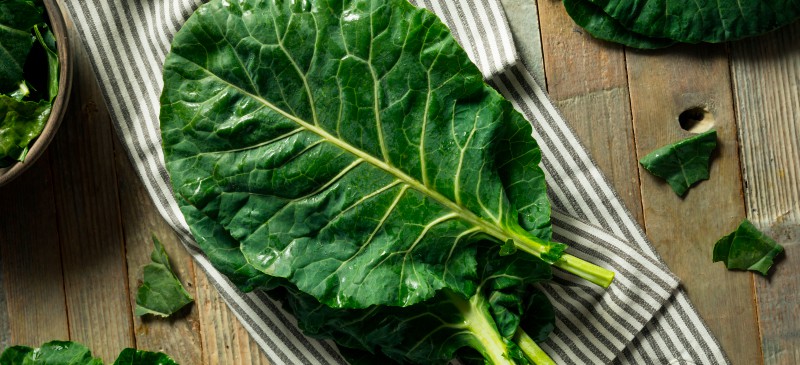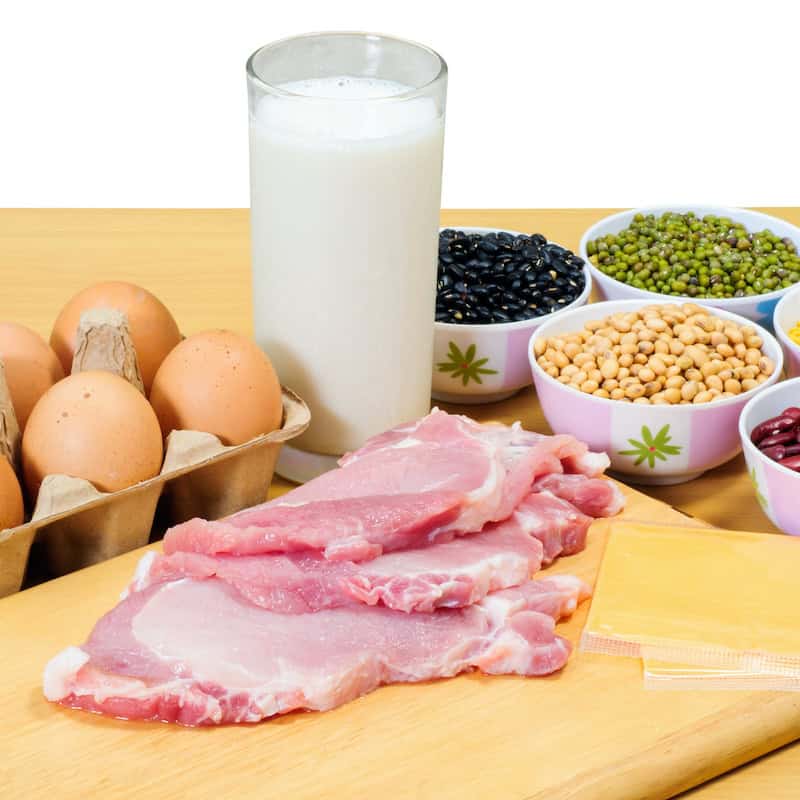This Dr. Axe content is medically reviewed or fact checked to ensure factually accurate information.
With strict editorial sourcing guidelines, we only link to academic research institutions, reputable media sites and, when research is available, medically peer-reviewed studies. Note that the numbers in parentheses (1, 2, etc.) are clickable links to these studies.
The information in our articles is NOT intended to replace a one-on-one relationship with a qualified health care professional and is not intended as medical advice.
This article is based on scientific evidence, written by experts and fact checked by our trained editorial staff. Note that the numbers in parentheses (1, 2, etc.) are clickable links to medically peer-reviewed studies.
Our team includes licensed nutritionists and dietitians, certified health education specialists, as well as certified strength and conditioning specialists, personal trainers and corrective exercise specialists. Our team aims to be not only thorough with its research, but also objective and unbiased.
The information in our articles is NOT intended to replace a one-on-one relationship with a qualified health care professional and is not intended as medical advice.
Collard Greens Nutrition Helps Fight Cancer, Provide Detox Support and More
March 15, 2024

If you aren’t familiar with the benefits of collard greens nutrition, you may be surprised what this leafy green can do.
Collard greens (or collards) are various loose-leafed plants that belong to the Brassica oleracea species. This beneficial vegetable is related to others in the Acephala group, including:
- cabbage
- Swiss chard
- broccoli
- cauliflower
- kale
- Brussels sprouts
Collard greens date back to prehistoric times, and they are one of the oldest members of the cabbage family. The Ancient Greeks cultivated several forms of both collard greens and kale.
Today, it grows in:
- Brazil
- Portugal
- the southern United States
- many parts of Africa
- Montenegro
- Bosnia and Herzegovina
- southern Croatia
- northern Spain
- northern India
The collard green plant is grown for its large, dark-colored and edible leaves. Similar to kale, it has an upright stalk, often growing up to two feet tall. The leaves are thick and have a slightly bitter taste.
Collard greens are unique because they’re rich in sulfur-containing compounds called glucosinolates, which support detoxification, and indole-3-carbinol that greatly reduces the risk of breast, colon and lung cancer.
Collard greens are a great vitamin K and vitamin A food. They’re also rich is soluble fiber and have strong antioxidant properties.
By adding collard greens to your diet, you can reduce disease-causing inflammation, help treat digestive conditions, detox your body and boost cardiovascular health.
One of the most important components of collard greens, and other cruciferous vegetables, is glutathione. This peptide consists of three key amino acids that play several vital roles in the body.
It helps the liver cleanse and detoxify fat, boosts immune function, fights cancer, protects the body from environmental toxins, and prevents drug resistance.
Glutathione is so important to our health that longevity researchers believe the levels that are present in our cells serve as a predictor of how long we are going to live. Collard greens nutrition boosts glutathione levels and allows this molecule to do its magic.
Collard Greens Nutrition Facts
Collard greens are among the best vitamin C foods, and they’re a good source of vitamin K and soluble fiber. They also contain multiple nutrients with potent anti-cancer properties, such as diindolylmethane and sulforaphane.
A one-cup serving of chopped collard greens nutrition (about 190 grams) contains approximately:
- Calories: 62.7
- Total Carbohydrates: 10.7 g
- Fiber: 7.6 g
- Sugar: 0.8 g
- Total Fat: 1.4 g
- Saturated Fat: 0.1 g
- Polyunsaturated Fat: 0.3 g
- Monounsaturated Fat: 0.05 g
- Trans Fat: 0 g
- Protein: 5.2 g
- Sodium: 28.5 mg (1% DV*)
- Vitamin K: 773 mcg (644% DV)
- Vitamin A: 722 mcg (80% DV)
- Manganese: 1 mg (43% DV)
- Vitamin C: 34.6 mg (38% DV)
- Calcium: 268 mg (21% DV)
- Riboflavin: 0.2 mg (15% DV)
- Vitamin B6: 0.2 mg (12% DV)
- Iron: 2.2 mg (12% DV)
- Vitamin E: 1.7 mg (11% DV)
- Copper: 0.1 mg (11% DV)
- Magnesium: 39.9 mg (10% DV)
- Folate: 30.4 mcg (8% DV)
- Thiamine: 0.1 mg (8% DV)
- Pantothenic Acid: 0.4 mg (8% DV)
- Niacin: 1.1 mg (7% DV)
- Phosphorus: 60.8 mg (5% DV)
- Potassium: 222 mg (5% DV)
*Daily Value: Percentages are based on a diet of 2,000 calories a day.
Health Benefits
1. Help Prevent Cancer
Collard greens help detoxify the body, have high levels of antioxidants and reduce inflammation — making this powerful vegetable a natural cancer fighter and preventer.
The National Cancer Institute indicates that the secret behind the cancer-killing ability of collard greens nutrition and other cruciferous veggies is they’re rich in glucosinolates — a large group of sulfur-containing compounds.
These chemicals are known to break down during the chewing and digestion process into biologically active compounds that prevent the growth of cancer cells. The compounds are called indoles, thiocyanates and isothiocyanates, and studies suggest that they protect rats and mice against cancer of the bladder, breast, colon, liver, lung and stomach.
These powerful glucosinolates are also known to:
- reduce inflammation
- reprogram cancer cells to die off
- prevent tumor formation and metastasis
- deactivate carcinogens
- contain antibacterial and antiviral properties
2. Provide Liver Detox Support
Just like the health benefits of kale, one of the top health benefits of collard greens is that they’re a natural detoxifier. They not only help remove toxins, but they eliminate them from the body, too.
A component in collard greens nutrition called isothiocyanates is made from glucosinolates. They’re reported to help detox the body at the cellular level.
Glucosinolates and compounds found in greens help activate detoxification enzymes and regulate their activity. They also trigger the liver to produce detoxifying enzymes that block free-radical attacks on your DNA.
By eating collard greens regularly, you help the body eliminate toxins, or poisons, that come from processed foods, pollutants, pesticides and pharmaceuticals.
3. Support Cardiovascular Health
Because collard greens reduce inflammation, they impact our cardiovascular health. Vitamin K, which is abundant in collard greens nutrition, is a critical nutrient for reducing inflammation and protecting cells that line blood vessels, including both veins and arteries.
Vitamin K has been shown to help prevent calcification of arteries, one of the leading causes of heart attacks. It works by carrying calcium out of the arteries and not allowing it to form into hard, dangerous plaque deposits.
It helps treat high blood pressure and reduces the risk of health conditions such as stroke, heart attack and diabetes.
4. Lower Cholesterol
Cholesterol is a naturally occurring substance made by the liver and required by the body for the proper function of cells, nerves and hormones. It travels in the fatty acids of the bloodstream and can build up in the walls of the arteries, decreasing the flow of blood to vital areas of the body.
Collard greens help lower cholesterol naturally because the leaves are high in fiber. Soluble fiber binds cholesterol in the digestive system, causing it to be excreted by the body.
A study published in the American Journal of Preventive Medicine concluded that a fiber supplement provided significant and sustained reductions in LDL (bad cholesterol) without reducing HDL (good cholesterol) or increasing triglycerides over a 51-week treatment period.
5. Support Digestive System
Because collard greens are some of the best high-fiber foods, eating this beneficial vegetable stimulates the digestive system. Collard greens consumption can be added as an irritable bowel syndrome (IBS) diet food, for example, because they help combat IBS.
IBS generally causes severe symptoms, such as diarrhea or ulceration of the digestive tract. One major cause of IBS is a low-fiber diet and nutritional deficiencies.
Because of the high fiber content in collard greens nutrition, this veggie can help treat this syndrome that’s often related to a number of other health conditions, including ulcerative colitis, Crohn’s disease and leaky gut syndrome.
The glucoraphanin present in collard greens nutrition also helps protect the health of the stomach lining by preventing bacterial overgrowth and the clinging of bacterium to our stomach wall. Animal studies show that glucoraphanin is not destroyed by digestive enzymes in the microbiota so it’s able to pass through the digestive tract and help balance bacteria.
6. High Source of Bone-Building Vitamin K
A cup of cooked collard greens nutrition has way over 100 percent of the recommended daily value of vitamin K, an essential fat-soluble vitamin. Vitamin K is most well-known for being responsible for bone building and blood clotting. In fact, vitamin K builds bones better than calcium.
Human intervention studies demonstrate that vitamin K not only increases bone mineral density in osteoporotic people, but reduces fracture rates, too.
Vitamin K is also one of the most crucial vitamins for preventing heart disease. Studies show that individuals who increase their intake of dietary vitamin K have a lower risk of cardiovascular mortality.
A vitamin K deficiency can lead to health conditions including IBS, heart disease, weakened bones, tooth decay and cancer.
7. High Source of Inflammation-Reducing Vitamin A
Vitamin A is a fat-soluble vitamin that’s also a powerful antioxidant. Collard greens nutrition helps you experience the amazing vitamin A benefits.
Vitamin A plays a critical role in maintaining healthy vision, neurological function and healthy skin. It’s essential for skin health, and a deficiency can lead to a poor complexion.
Consuming vitamin A-rich foods also helps fight acne and improve overall skin health. Like all high-antioxidant foods, it can reduce the risk of inflammation by fighting free radical damage, which is vital for good health and longevity.
8. Help Maintain Healthy Weight
Leafy greens like collard greens, kale, spinach and Swiss chard are chock-full of nutrients and iron. These fat-burning foods help keep muscles functioning properly and burning calories long after a workout.
Because collard greens are packed with vitamin K, eating the leaves keeps our bones strong and helps ward off osteoporosis, keeping the body moving normally well into old age. Studies indicate that vitamin K deficiency has been consistently associated with bone fractures.
Collard greens are a nutritionally dense vegetable, and the benefits your body gets for the amount of calories contained in these vegetables means you get more bang for your nutritional buck. You can chow down on these healthy greens guilt-free — plus, you can begin to crowd out other less nutritious foods that don’t boost your health and well-being.
9. May Help Prevent or Treat Diabetes
There are several reasons collard greens may help reduce the risk of diabetes or aid those who already have it. For starters, we know that eating more vegetables is associated with decreased risk of diabetes, and that’s true for collards as well due to the amount of vitamin E, vitamin C and other nutrients found in collard greens nutrition.
In addition, a 2021 study conducted on rats concluded that “collard green possesses a beneficial effect against diabetes and can be used in the program diet of diabetic patients.”
10. Protect Eye Health
Collard greens nutrition is rich in eye vitamins, namely vitamin A, lutein and zeaxanthin. Vitamin A, for instance, is vital for eye health, and a deficiency can cause major issues with vision. Meanwhile, lutein and zeaxanthin “protect the macula from damage by blue light, improve visual acuity and scavenge harmful reactive oxygen.”
In fact, a 2012 study published in the American Journal of Ophthalmology found that when African American women consumed collard greens — as well as fruit and fruit juices, fresh oranges, fresh peaces and kale — it helped protect against glaucoma.
11. May Aid Sleep
Studies show that consuming more leafy greens is associated with improved sleep. Plus, collard greens have choline and folate, which have been shown to help calm the mind and potentially bolster sleep.
How to Cook and Recipes
You can find collard greens at just about any food store. When buying them, look for the freshest option.
They should be a vibrant dark-green color, and the leaves should be crisp and full. Try to find the organic option to ensure the full health benefits.
Once you get your greens home, wash them well first — you want to remove any soil or debris that is left on the leaves. Once they are clean, they’re ready for cooking.
Collard greens can be stored in the refrigerator for three to five days. Try wrapping them in a damp paper towel and storing them in an open bag.
You can also freeze the leaves for smoothies — they can last for months when frozen. If you feel that the stalks of the leaves are too tough, go ahead and remove them, but remember that they’re edible.
There are a ton of fun and easy ways to use collard greens. You can add them to meals throughout the day — like chopping them and adding to a frittata or swapping out the starchy carb wrap and using collard green leaves instead.
You can sauté collard greens with olive oil or coconut oil and use them as a side to a meat dish or add them to smoothies, soups, dips and sauces.
Collard greens are often prepared with other leafy vegetables, like kale, turnip greens, spinach and mustard greens. They are commonly served with smoked or salted meats, diced onions, vinegar, salt and pepper.
Although collard greens did not originate in Africa, the habit of eating greens that have been cooked down into a low gravy and drinking the juices from the greens, which is known as “pot likker,” is of African origin and remains a popular way to consume them.
Today, collard greens are a stable in U.S. southern cuisine, and they’re eaten year-round.
In some cultures, collards are eaten on New Year’s Day, along with black-eyed peas or field peas and cornbread. They’re served to ensure wealth in the coming year, as the leaves resemble folding money.
Recipes
The easiest way to get a ton of green veggies into your daily diet is a smoothie. Try a green smoothie recipe that includes collard greens and a ton of other nutritious vegetables that boost the immune system and keep your body running smoothly.
Cooking collard greens is similar to preparing Swiss chard greens. They’re both vibrant leafy veggies that have amazing health benefits.
Swiss chard nutrition includes high levels of antioxidants and an impressive amount of potassium, magnesium, calcium, copper, and even more vitamins and minerals.
With high levels of vitamin K, vitamin A, vitamin C and many trace minerals, there’s almost no health condition that Swiss chard can’t help. Try our chard greens recipe, and add collard greens to the mix or swap out the chard greens completely.
A really great and healthy idea is using collard green leaves as wraps. You can add chicken, turkey, beef, veggies and cheese to collard green leaves and avoid those white carbohydrates that have little nutritional value.
This creamy broccoli soup recipe is absolutely delicious and full of healthy fats from coconuts. The collard greens and other cruciferous vegetables in this recipe reduce inflammation, fight free radical damage to your cells and aid your digestive system.
Risks and Side Effects
When you buy collard greens, it’s important that you choose the organic option because conventionally grown greens may be contaminated with concentrations of organophosphate insecticides, which are considered highly toxic to the nervous system.
Collard greens naturally contain substances called oxalates, which are normally not a health concern when eaten in normal, moderate amounts, but in rare cases eating high levels of oxalates can cause certain health problems. Oxalates are most known for potentially interfering with the absorption of certain minerals, such as calcium.
However, experts still agree that oxalates do not pose a threat for the vast majority of people and that their presence in vegetables like collard greens does not outweigh the many health benefits of this vegetable.
If you have a history of gallbladder issues, avoid eating a lot of leafy greens, like collard greens, because of the oxalate levels.
Conclusion
- Collard greens (or collards) are various loose-leafed plants that belong to the Brassica oleracea species. They are related to cabbage, Swiss chard, broccoli, cauliflower, kale and Brussels sprouts.
- Collards are jam-packed with important nutrients, including vitamin K and health-promoting antioxidants. Eating them supports bone, heart and digestive health.
- There are many ways to prepare these leafy greens to get the benefits of collard greens nutrition. They are often sautéed with olive oil or coconut oil and added to meat or bean dishes. You can also add them to soups, stews and even smoothies.






